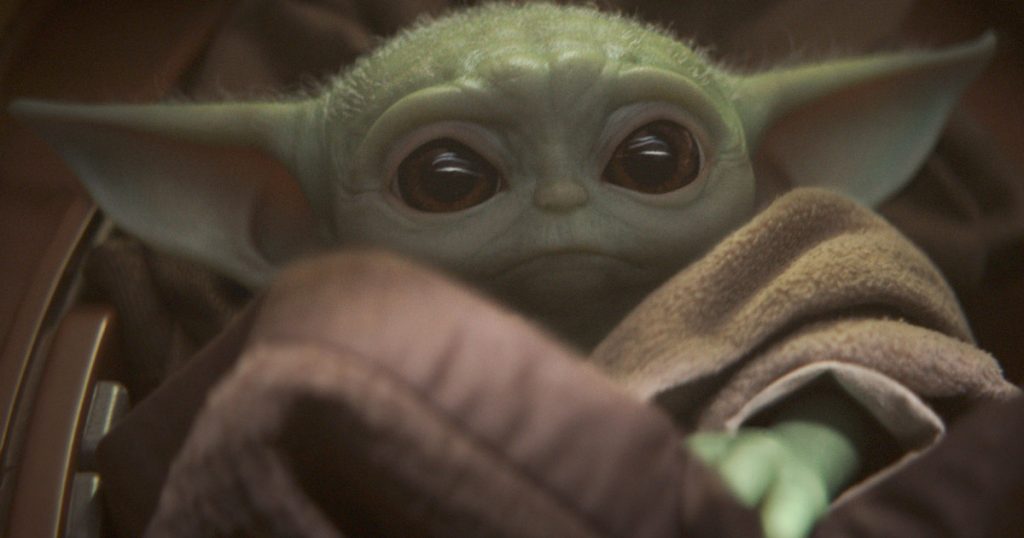The Award for Best New Species of 2019: A Tiny Primate That Looks Like Baby Yoda
Friends, we’ve found it. The most adorable—and therefore the best—new species of the year. It’s got bulging eyes, slender toes, and a tail twice the length of its minuscule body. If a chinchilla and a Furby had a baby, this is what it’d look like. But perhaps most importantly, the species bears a striking resemblance to Baby Yoda, the Mandalorian character that has rightfully won the internet over with its excruciating cuteness.
The new tarsier species.
Illustration copyright 2019 Stephen D. Nash / IUCN SSC Primate Specialist Group. Used with permission.Found on the Togean Island chain in Indonesia, Tarsius niemitzi, the new species of tarsier, a tiny nocturnal primate, is so rare and geographically isolated that if it were to be granted a conservation status, researchers estimate, it would be classified as endangered, though it’s unclear how many exist in the wild.
Journalists have for years compared tarsiers to the original Yoda; there’s even a rumor that the animals inspired the 1977 character. But the primate group, including the newly discovered species, probably has more in common with Baby Yoda. Take their eating habits for example: As fans of the show know, Baby Yoda eats frogs, while the tarsier—the only carnivorous primate—snacks on bugs and small reptiles it catches by leaping from tree to tree with its unexpectedly strong ankles and feet. And while tarsiers (as far as I know!) can’t use the Force, they can rotate their heads 180 degrees on both sides like an owl. This comes in handy because they can’t move their eyes in their sockets.
Baby Yoda, obviously
Lucasfilm/Disney
The Philippine tarsier
GoodOlga/Getty
A wood-boring clam inside of a piece of wood
Jenna JudgeAs my colleague Abigail Weinberg wrote in April, “This wood-boring clam bears a striking resemblance to, well, wood.” They live on the ocean floor and are only about the size of a pea.
“Tweezer-beaked” hopping rat illustration
Velizar Simeonovski, Field MuseumEric Rickart, a curator of the Natural History Museum of Utah at the University of Utah and lead author on the study which describes these new rats, calls them “quite bizarre.” Like tiny kangaroos, they hop around on their hind legs. “They have long, delicate snouts, and almost no chewing teeth.” Rickart and his colleagues discovered the rats somewhat by accident while studying rodents in the Philippines. They didn’t realize how common these rats were until they switched out the bait in their live traps from peanut butter to earthworms.
The newly described flying squirrel species
Kadoorie Farm & Botanic GardenThis big squirrel is part of a group considered to be the “most mysterious and rarest amongst all flying squirrels.” It weighs a whopping 3 pounds and was discovered in southwest China. Its scientific name, Biswamoyopterus gaoligongensis, comes from the location researchers found the squirrel, China’s Mount Gaoligong.
The cat-eyed cardinalfish
Mark ErdmannAnyone else getting Felix the Cat vibes? This absurd-looking fish, discovered by scientists at the California Academy of Sciences, lives in Papua New Guinea.
Achrioptera manga, one of two new species of giant stick insect found in Madagascar
Dr. Frank GlawWhen one of these male giant stick bugs is ready to find a mate, he turns fluorescent blue. The females, which can measure up to 9 inches in length, according to a press release, don’t change color, and instead, remain safely disguised as twigs. Scientists think the unnaturally bright color may serve as a warning signal to deter predators.





